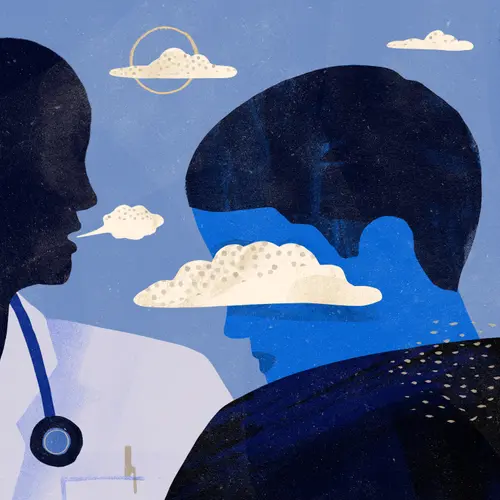Over the past 3 decades, mistaken ideas about HIV and AIDS have sometimes brought on the behaviors that cause people to get the virus. Although we still have questions about HIV, researchers have learned a lot -- enough to know that people who are HIV-positive aren't dangerous or doomed
I can get HIV by being around people who are HIV-positive.
HIV isn't spread through touch, tears, sweat, saliva, or pee. You can't catch it by:
- Breathing the same air
- Touching a toilet seat or door handle
- Drinking from a water fountain
- Hugging, kissing, or shaking hands
- Sharing eating utensils
- Using exercise equipment at a gym
You can get it from infected blood, semen, vaginal fluid, or breast milk.
Mosquitoes spread HIV.
Because the virus is passed through blood, people have worried that they could get it from biting or bloodsucking insects. Several studies show that doesn't happen, even in areas with lots of mosquitoes and cases of HIV.
When bugs bite, they don't inject the blood of the person or animal they bit before you. Also, HIV lives for only a short time inside them.
Oral sex is just as risky when it comes to HIV.
The risk from oral sex is almost negligible compared with other types of sex. In theory, it seems possible if your partner has HIV, but in reality, that is not the case.
I'm straight and don't use IV drugs. I won't get HIV.
Most men get HIV through sexual contact with other men. But you can get the virus from heterosexual contact with an infected person, too: About 1 in 6 men and 3 in 4 women do. Women who have sex with women have the lowest risk of transmission.
I could tell if my partner was HIV-positive.
You can have HIV without any symptoms for years. The only way for you or your partner to know if you're positive is to get tested. The long period of asymptomatic infection is why the CDC recommends that everyone between 18 and 64 be tested at least once as part of routine blood work.
I don't need to worry about getting HIV. Drugs will keep me well.
Antiretroviral drugs (ART) improve the lives of many people who have HIV and help them live longer. But many of these drugs are expensive and some may have serious side effects. And, with the exception of a newer drug that can be given by injection, you have to take them every day. There's no cure for HIV. And drug-resistant strains of HIV can make treatment harder.
Prevention is cheaper and easier than managing a lifelong condition and the problems it brings.
I'm HIV-positive. My life is over.
In the early years, when the disease was epidemic and no treatment was available, the death rate from AIDS was extremely high. But today's drugs allow people who have HIV or even AIDS to live much longer, normal, and productive lives. If you start drug treatment right away and take it correctly, it’s possible you won’t ever develop AIDS. And you may live as long as you would have without the virus.
HIV could make you more likely to get diseases like cancer, heart disease, and kidney disease. So take your HIV medicine as prescribed and protect yourself with a healthy lifestyle. And tell your doctor about any other health problems you have. HIV drugs can interfere with other medications and make some conditions harder to control.
I’ll have to take dozens of pills every day.
Years ago, people with HIV did need to take a lot of pills. Now, most people starting on HIV treatment take one to four pills daily. You may be able to take medicines that combine two or three drugs in a single pill.
If I'm getting treatment, I can't spread the virus.
HIV treatments can lower the amount of virus in your blood to a level that doesn't show up in blood tests. This is called an undetectable viral load. Studies show that if your viral load is undetectable, you cannot transmit the virus sexually. But if you miss doses of your HIV meds or stop using them, you can pass the virus to others. So be sure to take them exactly as prescribed.
You should practice safe sex so you won't give the virus to someone else. Even if you and your partner both have HIV and undetectable virus, wearing condoms can protect you both from other, possibly drug-resistant, strains, as well as other sexually transmitted diseases.
Now that I have HIV, I can’t have kids.
You may be able to safely have children. Doctors can help you take steps to lower -- or remove -- the chance that you’ll pass the virus to your partner during conception. If you're pregnant, your doctor will give you HIV drugs to protect you and your baby. The baby may also be given medication after birth.
AIDS is genocide.
HIV isn't a government conspiracy to kill minorities. Rates of infection are higher in African American and Latino people, but that may be due in part to less access to health care and other social and economic factors.

